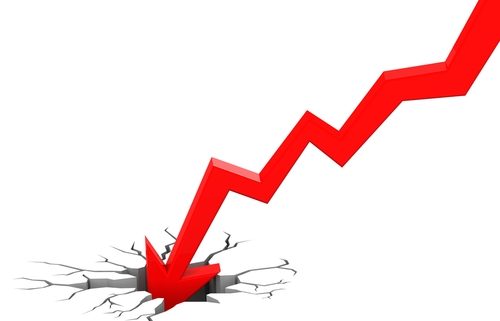Home Prices “Cooled” at a Record-Breaking Rate in July
Traditionally, real estate is stable enough that it never crashes as quickly as the stock market. That’s one reason many real estate investors flock to Real Estate IRAs—they know that these assets are going to be more stable in the long run, which can be good for hedging a retirement portfolio and adding some peace and stability to one’s peace of mind. And in recent years, it’s been relatively easy to make a profit in real estate, taking advantage of rocket-hot prices. However, recent news out of the S&P CoreLogic Case-Shiller Index has raised a few eyebrows.
The news, as covered in CNBC, reports that home prices in July of this year (2022) were higher than they were a year before, but “cooled significantly from June gains.” Prices rose an average of 15.8% across the nation over July 2021, but that’s far below the rise in June, which was 18.1%. This is why real estate analysts call it “cooling” and not a dip in prices.
What does this mean? Here’s our reaction.
Understanding the S&P CoreLogic Case-Shiller Index
The S&P CoreLogic Case-Shiller Home Price Index is one of the dominating indicators of U.S. residential real estate prices. According to CNBC, it also looks at a 10-city composite, tracking metropolitan areas like New York and Boston—this composite also saw a cooling that reflected the national trend. There is also a 20-city composite that adds smaller metropolitan areas like Seattle—this, too, reflected the national trend. This gives real estate investors a reliable look at home prices across the nation, and they all consistently say the same thing: the trend may be reversing.
To be clear, a reversal in real estate prices would be fairly big news in comparison with a cooling. But as CNBC quoted Craig J. Lazzara, the managing director of the S&P DJI, “July’s report reflects a forceful deceleration.” In other words, real estate is now showing signs of slowing down towards what may ultimately constitute a reversal. As stated earlier, real estate prices typically move more slowly than stock markets, which gives investors some time to plan and prepare.
What is Driving the Cooling Trend?
The cooling trend in home prices may be driven by uncertainty in the economy as a whole, to be sure. But there’s no doubt that higher interest rates are keeping people in their existing mortgages. After all, a homeowner who has been able to purchase a home for 3% rates—as we saw in recent years—is now looking at 6-7% interest rates on mortgages if taking out a new loan. This will slow the supply of new houses on the market.
For that reason, investors may think about purchasing real estate for the quality of cash flow it offers. Or investors who currently have real estate may be looking to sit on that investment and rent it out, generating cash against the lower mortgage rates they secured, if securing a fixed rate loan term.
In other words, real estate is not immune from the problems of inflation and higher interest rates in the general market. Wise investors will take note of what’s going on in the real estate market. It doesn’t mean investors have to abandon their strategies—but it always helps to take into account what the price indexes are showing. And as of right now, the Case-Shiller index is showing significant slowing in real estate prices all across the U.S.
Interested in learning more about Self-Directed IRAs? Contact American IRA, LLC at 866-7500-IRA (472) for a free consultation. Download our free guides or visit us online at www.AmericanIRA.com.









